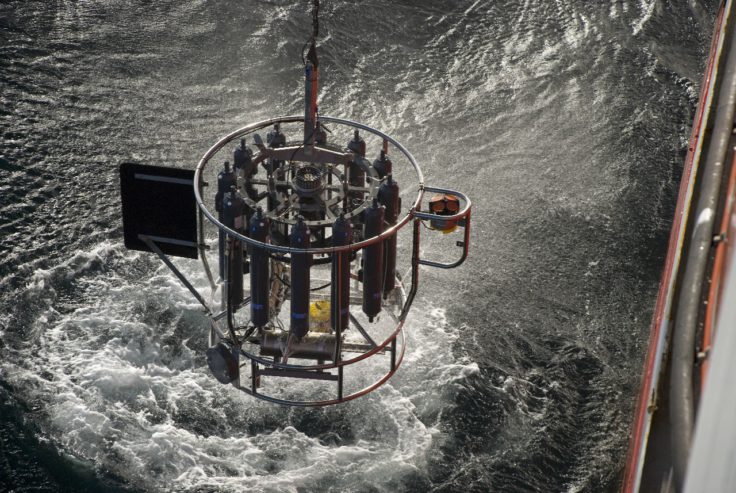CONSEC
CONSEC is addressing the challenge to understand the links between the biodiversity, structure and function of Southern Ocean ecosystems and the impacts of rapid environmental changes to improve scientific knowledge …
The Southern Ocean is inextricably linked with ice shelves and outlet glaciers flowing into it, and with the atmosphere above and seabed below. Gathering data from both above and below the RRS Sir David Attenborough therefore offers a holistic, atmosphere-to-seabed approach to oceanographic research.
The new polar ship’s increased capability to support unmanned and remotely operated technologies will enable studies of the ocean in locations that were previously very inaccessible, such as underneath ice shelves and in front of glacier calving faces.
RRS Sir David Attenborough‘s winch systems can deploy conductivity, temperature, depth (CTD) arrays weighing up to 10 tonnes either over the side of the ship or via the moon pool.
The stainless steel CTD array is one of the most used instruments on research cruises. The array generates vertical profiles of the water column’s properties and allowing scientists to collect water samples from discrete depths.
A second CTD array, made of titanium, is used to detect trace metals at depth. It uses a specially designed winch system and metal-free cables.
Both CTD systems are equipped with the following instruments:
The CTD rosettes, with their range of sensors and water sampling capabilities, enable researchers to study a wide variety of parameters throughout the water column – including physical, biological and chemical properties, and horizontal and vertical currents. Oceanographic moorings can collect measurements year-round in both ice-covered and open waters. Researchers can deploy and recover these moorings using the BAS scientific mooring winch.

Science Leader IMP 2
BAS-Arctic Working Group, BAS Science Strategy Executive Group, Polar Oceans team
CONSEC is addressing the challenge to understand the links between the biodiversity, structure and function of Southern Ocean ecosystems and the impacts of rapid environmental changes to improve scientific knowledge …